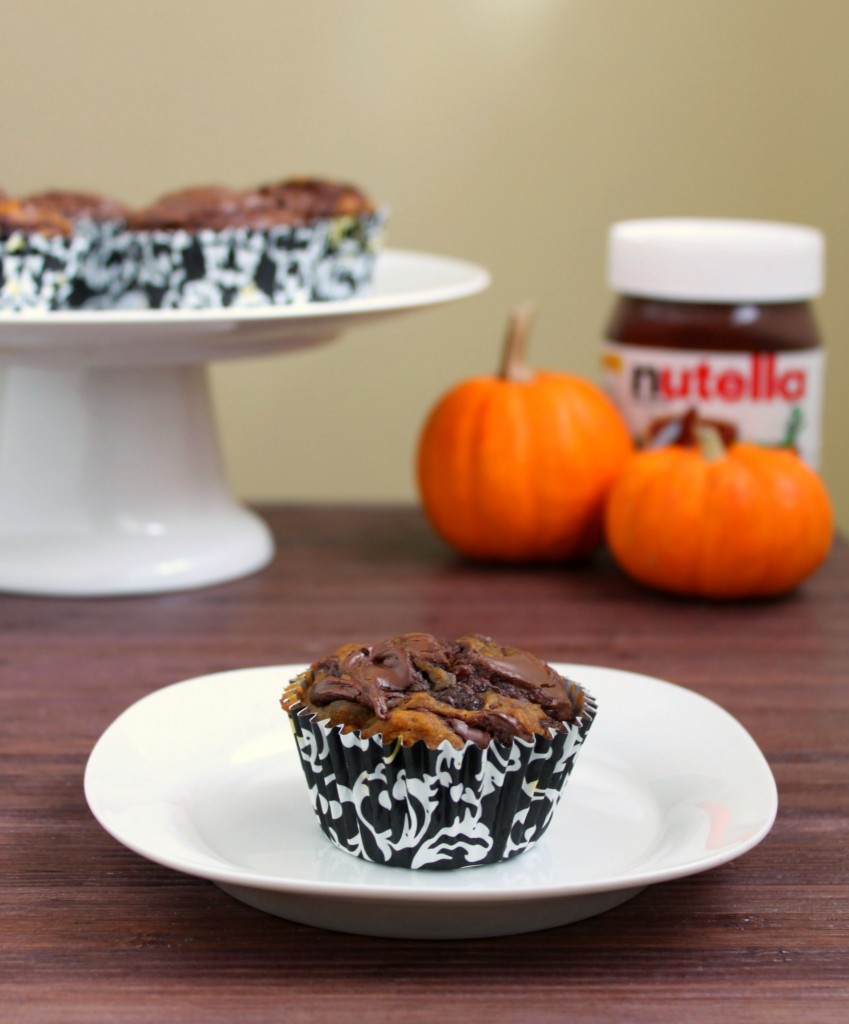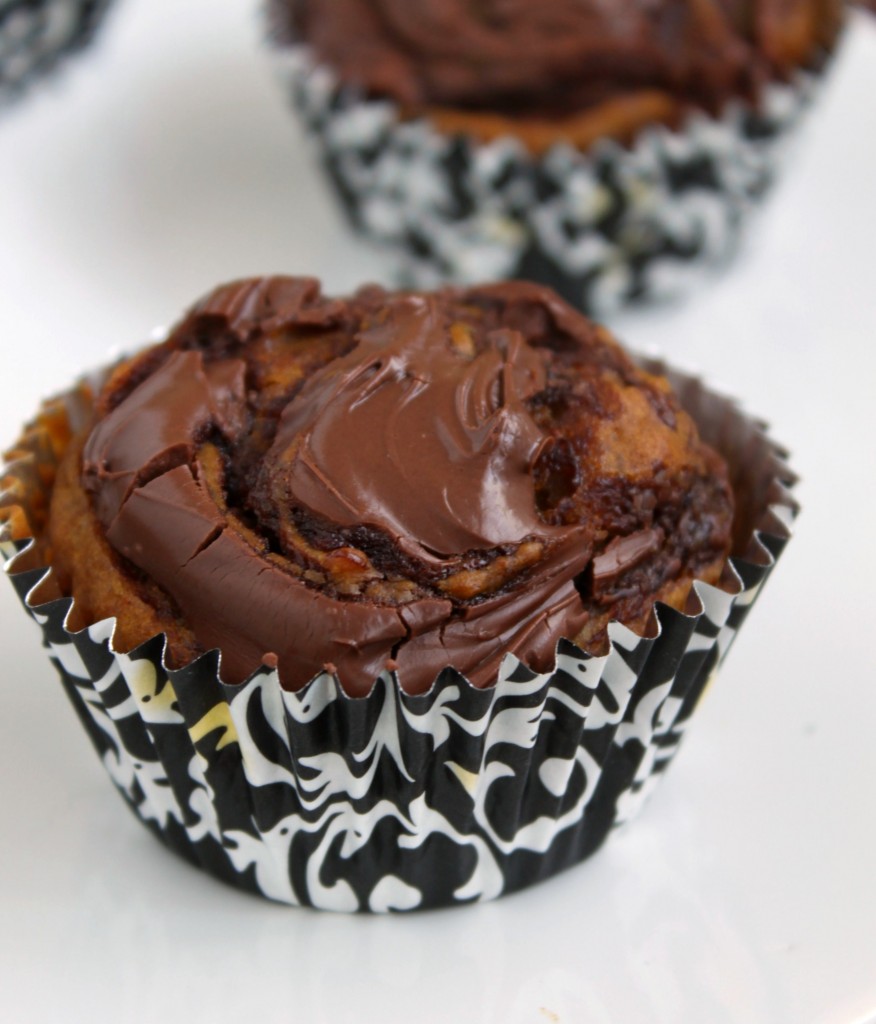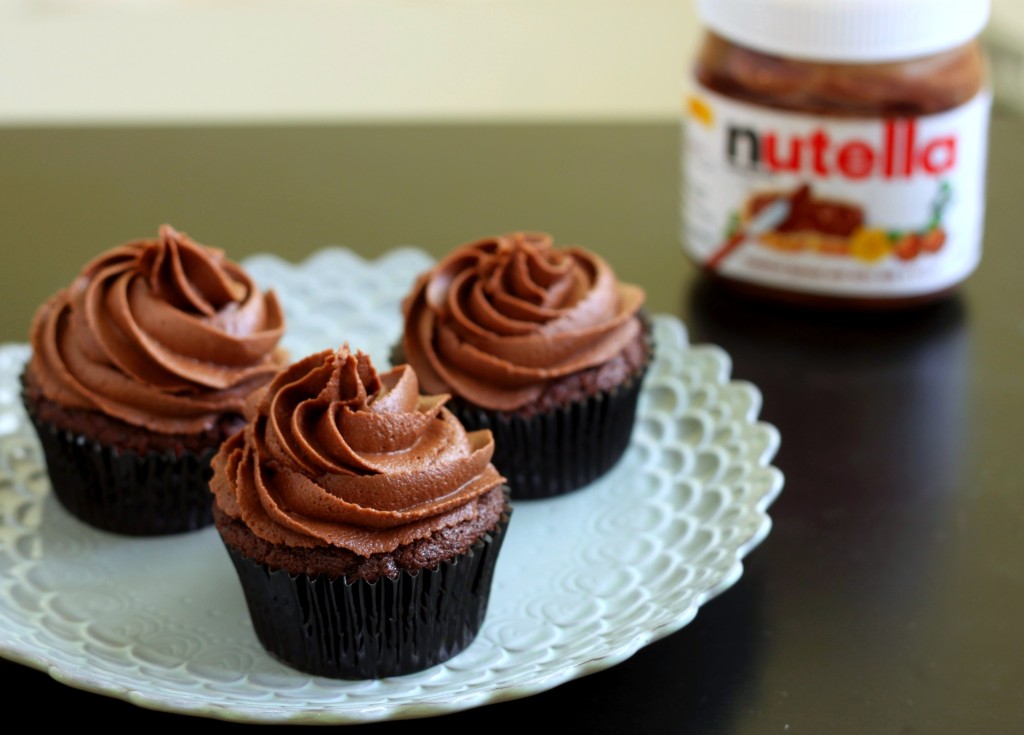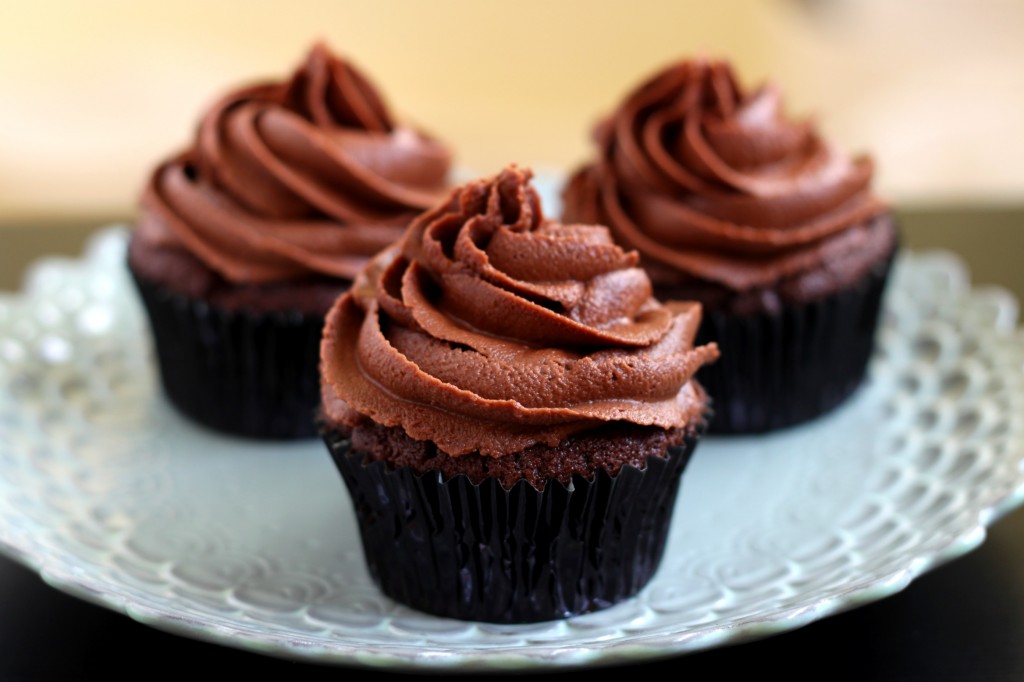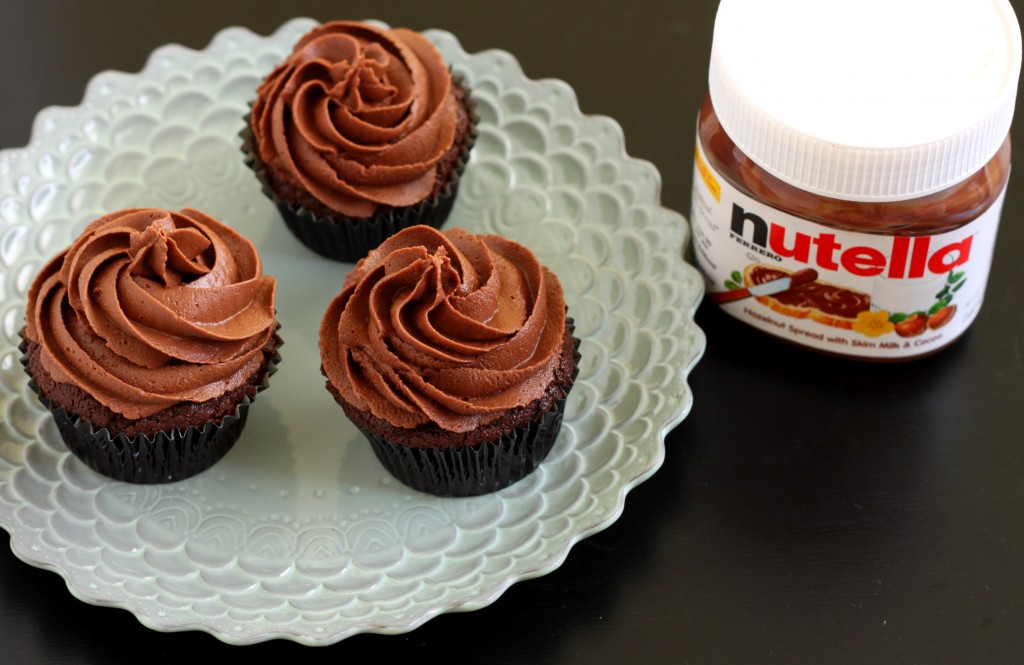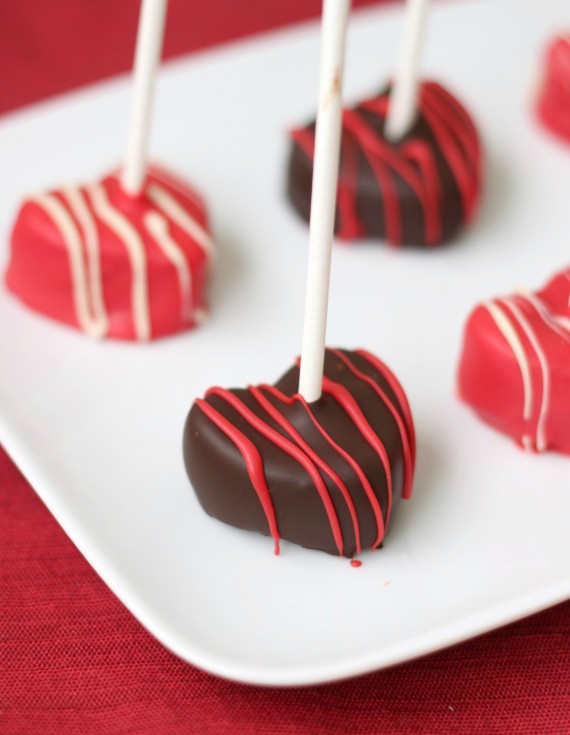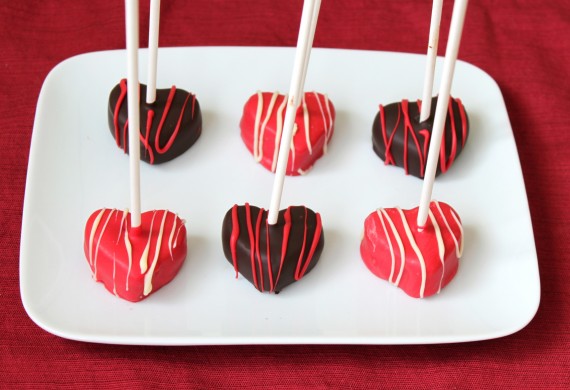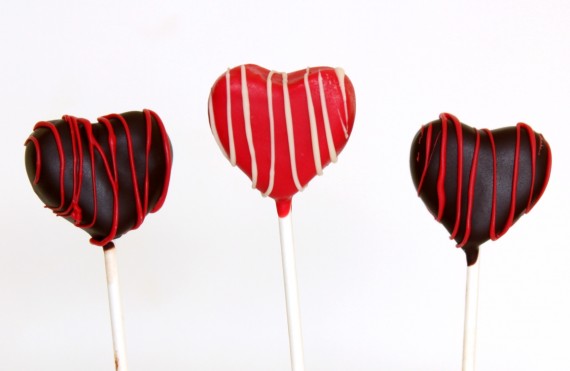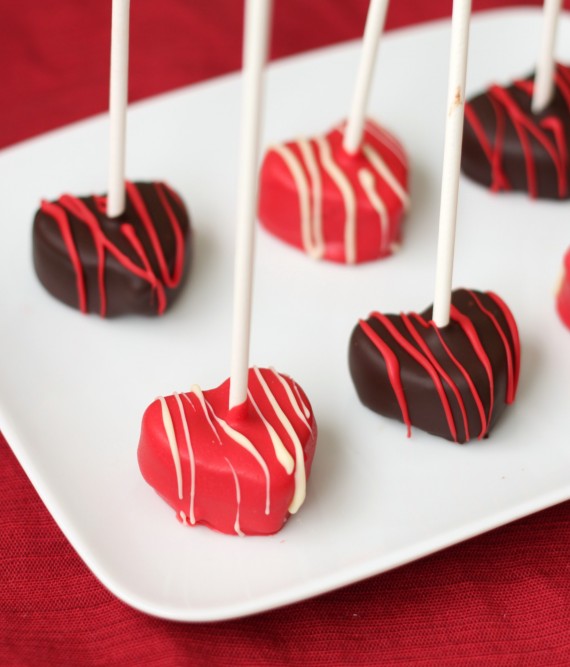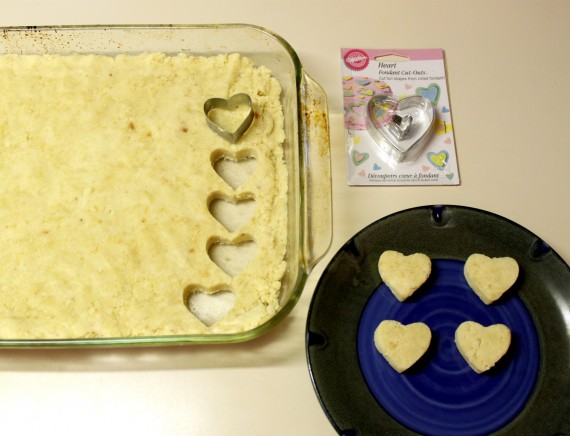So, it turns out I’ve been on a bit of a gingerbread kick lately…
I love sugar and spice and everything nice, and gingerbread (in any form) is such an old-fashioned treat that I can’t seem to get enough of (even though I seem to eat the entire year’s worth between December 1-December 31st). I make some form of gingerbread every year over the holidays, but yet it never dawned on me that pairing it with chocolate would be so delightful and that it would just all make so much sense…until, of course, I made Gingerbread Swiss Meringue Buttercream. Being an SMB (or SMBC) lover, I couldn’t resist tossing some gingerbread spices into a big fluffy batch of Brown Sugar Buttercream, making it the gingerbread variation, for swirling onto holiday cupcakes. I suddenly seem to be using Brown Sugar Buttercream often lately, because it’s such a wonderful base for so many variations (such as
here and for the deliciousness that was
Peanut Butter Buttercream. The thing was, I knew I wanted to make little gingerbread cookie toppers, and if I had made gingerbread cupcakes to go along with the gingerbread buttercream, that would have made them
triple gingerbread cupcakes which seemed a bit, well, spicy (although, that may not be a bad thing–I will try this and get back to you). For this round, adding some rich dark chocolate to the idea just felt right.

Then I remembered how much I’d wanted to try the chocolate cupcake recipe from a book I recently received:
Making Cupcakes with Lola
, which was written by the talented baker duo from
Lola’s in the UK. This is one of the loveliest cupcake books I’ve read, and I’ve studied it for weeks–the cupcakes are a mix of classic and creative and the gorgeous photography & styling just brings it all to life. I am eager to try many of their more unusual, or as they call it, “over the top” cupcakes (think
Masala Chai Tea cupcakes,
Gingerbread Latte cupcakes and more), but I couldn’t resist starting with their classic chocolate cupcake recipe. It stood out to me because they use both melted chocolate
and cocoa powder and calls for no other liquid ingredient aside from 4 eggs. I was kind of intrigued! It’s a lighter, fluffier chocolate cake as opposed to the more fudgy oil-based chocolate cake I often use, which was a fun change, and I loved the double chocolate result.
So once I had my heart set on dark chocolate & gingerbread cupcakes, it dawned on me that my little gingerbread cookie toppers simply must be dipped in the finest dark chocolate–just makes good sense, right? I actually love making tiny gingerbread folk versus the standard size, because they are so cute and they are a perfect kid-sized treat. I was pretty excited when I remembered Reese having a teeny tiny house cutter in her playdough tool bin that was the perfect size for little chocolate gingerbread house toppers. So then we had a wee gingerbread girl and her wee gingerbread house. As far as we were concerned, it was kind of awesome. Why do things like this excite me so much? I’ll never know.

I hope you’re having a wonderful Saturday filled with holiday baking and hopefully, for your sake, no shopping! Personally, I like to keep the circus element of my day in our own four walls at this time of year, just as I am today. This thought would comfort me, if it weren’t for the fact that I have barely started my holiday shopping. Minor detail!
I’ll be back very soon with another holiday delight!
P.S. I’m pretty sure we’d jingle Santa’s bells if we left him a plate of these and a tall glass of milk. Maybe we could even add a pretty wrapped box of the chocolate dipped gingerbread cookies for his elves?
Double Chocolate Gingerbread Cupcakes = Lola’s Chocolate Cupcakes
+ Gingerbread Swiss Buttercream
+ Chocolate-Dipped Gingerbread Cookie Toppers
Lola’s Bakery Chocolate Cupcakes
Ingredients
175 g/1 1/2 sticks butter, cubed
225 g/1 cup plus 2 tablespoons (caster) sugar
4 eggs
100 g/3/4 cup self-rising flour
a pinch of salt
Method
Preheat the oven to 180°C/350°F/Gas 4.
1. Put the chocolate and butter in a heatproof bowl over a pan of simmering water. Do not let the base of the bowl touch the water. Heat, stirring, until the chocolate melts and you have a smooth, glossy mixture. Remove from the heat and stir in the sugar. Let cool for 10 minutes.
2. Now beat with an electric hand mixer for 3 minutes. Add the eggs, one at a time, beating for 10 seconds between each addition.
3. Sift the flour, cocoa and salt into the bowl and beat until blendid.
4. Divide the mixture between the muffin cases. Bake in the preheated oven and let cool completely on a wire rack before decorating.
Sweetapolita’s Notes
*Caster/castor sugar is also known as superfine sugar. You can create your own superfine sugar by substituting regular granulated sugar and processing it in a food processor until very fine.
**As with any cake or cupcake recipe I bake, I used room temperature eggs (not cold).
***I filled the cupcake liners a little more than I typically do, as I divided the batter evenly among the 12 liners, as directed. They were just over 2/3 full. I typically don’t prefer a ”muffin-top” cupcake, but because I knew I wanted a wider cupcake to hold very billowy swirls of buttercream, I went with it. I may never look back.
Gingerbread Swiss Meringue Buttercream
Yield: ~5 cups, enough for filling and frosting an 8-inch round cake, or frosting 12+ cupcakes.
Ingredients
5 large egg whites (~150 grams/5 ounces)
1 1/4 cup (250 grams/8.5 ounces) dark brown sugar (you can also use light brown sugar)
1 1/2 cups (3 sticks, 340 grams/12 ounces/3/4 lb) unsalted butter, softened and cut into cubes
1/2 teaspoon ( mL) pure vanilla extract (I use
Nielsen-Massey Vanillas 8-oz. Madagascar Bourbon Vanilla Extract
)
1/2 teaspoon ground ginger
1/4 teaspoon ground cinnamon
a pinch of ground nutmeg
a pinch of salt
Method
1. Wipe the bowl and whisk attachment of an electric mixer with paper towel and lemon juice, to remove any trace of grease. Add egg whites and brown sugar and simmer over a pot of water (not boiling), whisking constantly but gently, until temperature reaches 140-160°F, or if you don’t have a candy thermometer, until the sugar has completely dissolved and the egg whites are hot, about 5 minutes if you used room temperature egg whites. About 8+ minutes if they were cold.
2. With whisk attachment of mixer, begin to whip until the meringue is thick, glossy, and the bottom of the bowl feels neutral to the touch (this can take up to 10 minutes or so and is so important–
never add butter to warm meringue). Switch over to paddle attachment and, with mixer on low speed, add softened butter in chunks until incorporated, and mix until it has reached a silky smooth texture (if curdles, keep mixing on medium-low and it will come back to smooth).
3. Add vanilla, salt and spices, continuing to beat on low speed until well combined.
Sweetapolita’s Notes on Swiss Meringue Buttercream:
* Can make buttercream ahead and keep in an airtight container in refrigerator for up to one week, leaving out at room temperature when needed, re-whipping in mixer for 5 minutes.
** Can freeze for up to 6-8 weeks. To thaw, place on counter overnight, and rewhip for 5 minutes with paddle attachment in an electric mixer.
***If not satiny enough upon rewhip, take 1/3 of buttercream and microwave in a microwave-safe container for ~8 seconds, then add back to mixing bowl and remix with remaining buttercream.
****For more detail about making Swiss Meringue Buttercream, you can find my
FAQ here and
photo tutorial here.
Chocolate-Dipped Gingerbread Cookies
1. Bake your favourite gingerbread cookie dough, and cut desired shapes–I prefer bite-size cookies in general, especially when using them for cupcake toppers. For these cookies, I tried Martha’s
Molasses-Gingerbread Cookies recipe, and I followed it to the letter. I love them because they are dark and have a very deep molasses taste. The dough is gorgeous–just note that you will likely need to add quite a bit of flour while rolling and you will need to flour your cutter often, otherwise it is quite sticky. Once baked, let cookies cool on wire rack.
*I found my little house and gingerbread doll cutters in my little girl’s playdough tool box, so don’t feel you have to stick with traditional cookie cutters.
2. Melt some (depending on how many cookies you are covering) quality chocolate in the microwave, and if you
follow this easy tempering process (when, using the microwave, your chocolate will be tempered in seconds, which is how we get the chocolate to harden with a nice sheen. For these cookies, I used
Callebaut Dark Chocolate Callets
, which is rich, dark and perfect for covering cookies and is intended for melting down.
3. Dip cookies into chocolate using two forks (or if you have a chocolate-dipping fork), covering entire cookie, or even just half, depending on the look you want to achieve, letting the excess chocolate drip back into bowl.
4. Place on
Silpat 
or wax paper-lined cookie sheet.
5. Place filled sheet in the refrigerator for about 20 minutes to set.
Place upon cupcakes or simply eat them as they are. Or both! Store at room temperature. http://sweetapolita.com/2011/12/double-chocolate-gingerbread-cupcakes/
